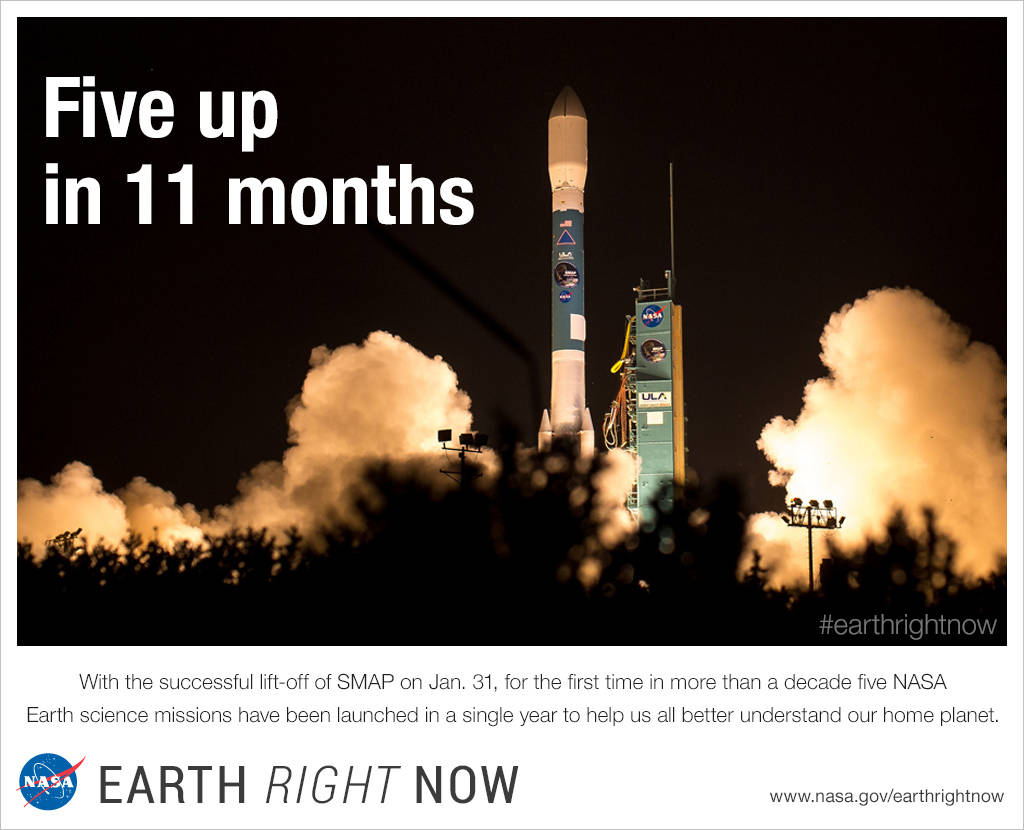With the launch of SMAP (Soil Moisture Active Passive) on Saturday, January 31, a total of five NASA missions to study Earth have launched in less than a year. Since the agency’s inception in 1958, NASA has established itself as a world leader in Earth science and climate studies, striving to explore and understand our changing planet so that societies can meet the challenges of the future. SMAP is one such mission, a polar orbiting satellite designed to collect global observations of soil moisture to improve weather and climate forecasts, monitor droughts, better predict flooding, better forecast crop yields, and assist in global famine warning. SMAP’s data products will be used by government and private agencies and universities, including the U.S. Department of Agriculture, U.S. Geological Survey, U.S. Centers for Disease Control and Prevention, and the United Nations World Food Programme. Learn more about this important soil moisture mapping mission at the SMAP website: http://smap.jpl.nasa.gov
1 min read



























